Το Resinance είναι τμήμα μιας ευρύτερης ενεργούς ερευνητικής διαδικασίας η οποία εκπονείται από το δίκτυο Materiablity, υπό την καθοδήγηση του ακαδημαϊκού Manuel Kretzer, στην Ζυρίχη της Ελβετίας, και διερευνά την πιθανή χρήση «έξυπνων υλικών» σε οποιοδήποτε αρχιτεκτονικό η χωρικό σχεδιαστικό η ερευνητικό υπόβαθρο. Πραγματοποιήθηκε Μάρτιο του 2013 στα πλαίσια Master of Advanced Studies στο ΕΤΗ Zurich.
Ο σχεδιασμός του «Resinance» επηρεάστηκε έντονα από τη συμπεριφορά των απλών οργανικών μορφών ζωής, και ιδιαίτερα όσων αφορά το σχηματισμό των κυτταρικών αποικιών. Κατά το σύνολο του αντιπροσωπεύει μια οικολογία λειτουργικών μονάδων που θα μπορούσαν να ενεργούν είτε αυτόνομα, αλλά και σε συντονισμό με τις γειτονικές μονάδες τους. Αποτελείται από 40 ενεργά τμήματα τα οποία αλλάζουν σταδιακά το χρώμα της επιφάνειας τους ως αντίδραση στην ανθρώπινη επαφή και αλληλεπιδραση. Ενώ αυτή η αργή μετατροπή, από σχεδιασμού δεν μπορεί αμέσως να γίνει αντιληπτή, κάθε συσκευή εχει και μια δεύτερη αντίδραση, παρέχοντας άμεση ανταπόκριση μεσω δονήσεων. Ανα τέσσερα τα στοιχεία αυτα, συνδέονται μεταξύ τους μορφώνοντας μια μονάδα ελέγχου, που τυπικά μοιάζει στα υπολοιπα αντικειμένα, αλλά χωρίς την ικανότητα να αλλάζει το συνολικό της χρώμα. Αυτές οι επαναλαμβανόμενες μονάδες, όπως και η χορογραφημένη συμπεριφορά του συγκεκριμένου συμπλέγματος διαβιβάζουν την ενεργή κατάσταση του κάθε στοιχείου, στους υπόλοιπους γείτονές του. Συνεπώς, δεν είναι απλά μια απτική πληροφορία που αλλαζει, αλλά μια πληροφορια που μεταδιδεται σε όλη την εγκατάσταση μέσω ενός δικτύου, το οποίο αναφέρεται στη συλλογική συμπεριφορά ενός σμήνους από οντότητες.
Resinance is part of an ongoing series, exploring the potential use of smart materials in an architectural context. It was realized in March 2013 by the Master of Advanced Studies class at the Chair for CAAD.
The design of ‘Resinance’ was strongly influenced by the behaviour of simple organic life forms, in particular the formation of cellular colonies. In its assembly it represented ecology of functional units that could both work autonomously but also in coordination with their neighbouring units. It consisted of 40 active elements that were gradually changing their surface colour in response to human touch. While this slow transformation as such couldn’t immediately be perceived, each device had a second actuator, providing direct response through shivers and vibrations. Every four elements were connected through a control unit that formally resembled the rest of the objects but without the ability to change colour. These units both choreographed the behaviour of the particular cluster and transmitted the current state of each element to its neighbours. Therefore the tactile input not only changed the touched element but was transmitted throughout the whole installation in a networked, swarm like behaviour.
supervision:
Manuel Kretzer
co-supervision:
Benjamin Dillenburger and Hironori Yoshida, CAAD
Weixin Huang and Lei Yu, Tsinghua University, China
Tomasz Jaskiewicz and Mariana Popescu, Hyperbody, TU Delft, Netherlands
Andrei Pruteanu and Stefan Dulman, Embedded Software Group, TU Delft, Netherlands
team:
Baldwin Mark, In Jessica, Janjusevic Tihomir, Jiang Nan, Letkemann Joel, Miranda Turu Nicolás, Prieler Irene, Schildberger David,
Shammas Demetris, Smigielska Maria, Tanigaito Aki, Xexaki Evi, Xydis Achilleas, Yuko Ishizu
CAAD, 2013
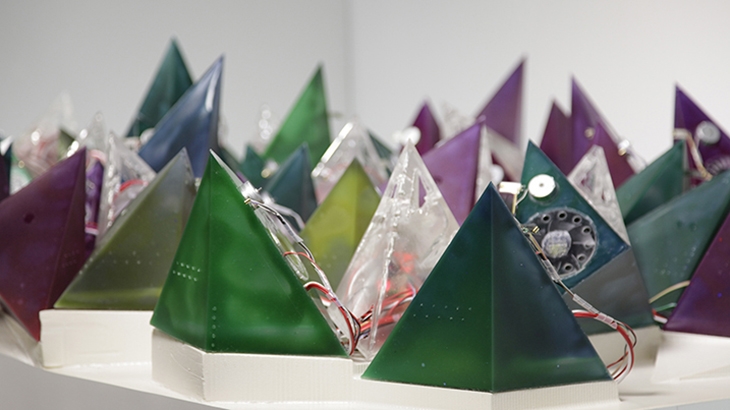 RESINANCE – Η ΕΓΚΑΤΑΣΤΑΣΗ
RESINANCE – Η ΕΓΚΑΤΑΣΤΑΣΗ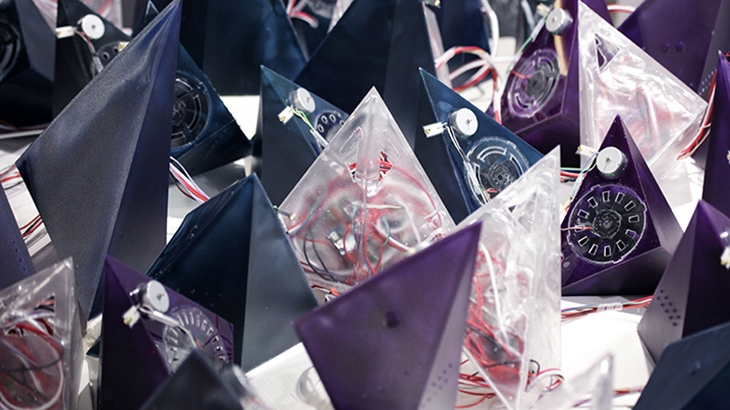 RESINANCE – Η ΕΓΚΑΤΑΣΤΑΣΗ
RESINANCE – Η ΕΓΚΑΤΑΣΤΑΣΗ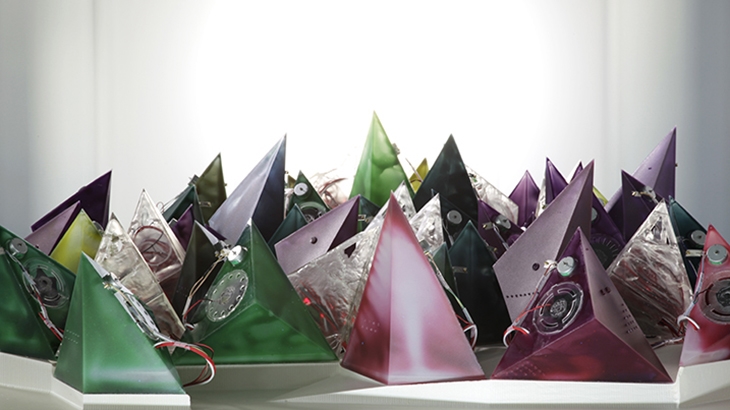 RESINANCE – Η ΕΓΚΑΤΑΣΤΑΣΗ
RESINANCE – Η ΕΓΚΑΤΑΣΤΑΣΗ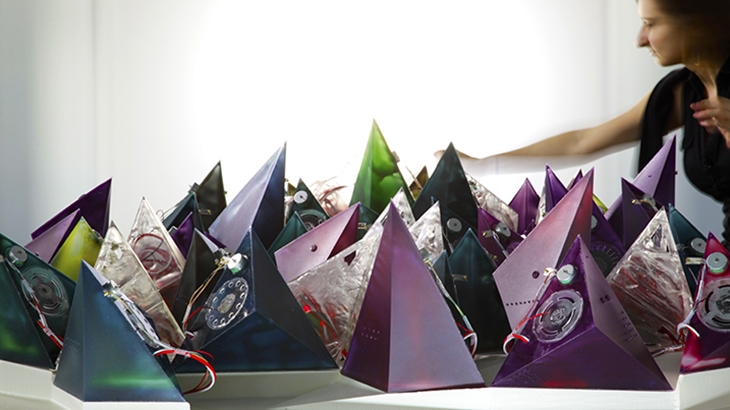 RESINANCE – Η ΕΓΚΑΤΑΣΤΑΣΗ
RESINANCE – Η ΕΓΚΑΤΑΣΤΑΣΗ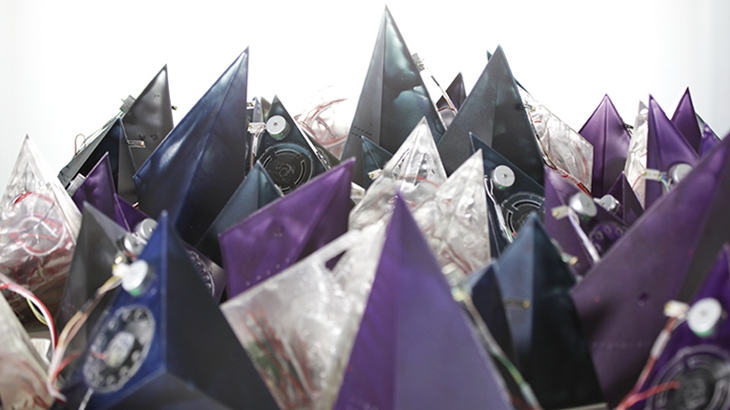 RESINANCE – Η ΕΓΚΑΤΑΣΤΑΣΗ
RESINANCE – Η ΕΓΚΑΤΑΣΤΑΣΗResinance from materiability on Vimeo.
Resinance – Video
READ ALSO: PYTHAGORAS BY SANDER MULDER